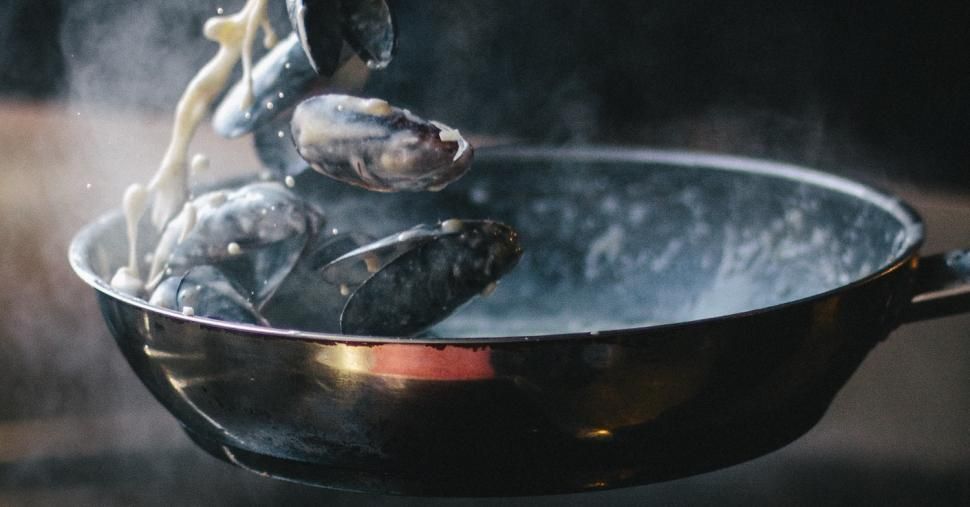A frying pan, a copper underfloor heating system, a jet engine: each formed from a metal, or metals, carefully chosen for their thermal (or lack of) properties. But what is in a material? How is the decision made as to which metal is right for which job, and what factors need to be considered ensuring both value for money, minimal wastage, and optimal performance?
The definition of metal is ‘any of a class of substances characterised by high electrical and thermal conductivity as well as by malleability, ductility and high reflectivity of light’1 and, of the 113 elements on the periodic table, 88 are considered metals, leaving you truly spoilt for choice. However, as is the way with materials, some will tick all the boxes, whilst others will be distinctly lacking.
Thermal conduction occurs when a material is heated, causing the electrons within it to vibrate. Free-moving electrons in metal enable them to travel easily, transferring their energy in the form of heat. The structure of metal permits the flow of electrons - the negatively charged particles within the atom - facilitating heat transportation from one area to another. How well a particular metal conducts heat is down to the ease at which the electrons can move without bumping into atoms on their way. Pure metals, such as copper, allow the longest journey, whereas impure metals, such as alloys, hinder the electrons, forcing an about-turn and thus reduced thermal conductivity.
The best metals for thermal conduction are gold, silver, and copper, all of which have applications in modern-day engineering. Silver has the highest thermal conductivity of any element, because its structure allows for the ease of electron travel. The equation to measure thermal conductivity, W/(mK) (Watts per meter per degree Kelvin), allows us to rank metals according to the ability to transfer heat,2 with silver taking the number one spot with a value of around 403 W/(mK). Far from a one-trick pony, silver not only excels at thermal conduction; it can also conduct electricity and refract light, making it the perfect choice for use in the manufacture of solar panels. However, it is not without its drawbacks. Silver is a soft metal and oxidises and discolours easily. It is also expensive, prohibitively so for most people. Fancy a solid silver frying pan? Its properties ensure your morning egg will fry to perfection, but at what cost? Just over £3,200, is the answer.3 And if silver is not quite precious enough for you, gold will also transfer heat beautifully, ranking at third with 327 W/(mK). Nobody has yet manufactured a solid gold frying pan, and perhaps for good reason; this costly cookware would probably come in at around the same price as a high-end sports car.
Jumping from one to three in the heat conductivity charts was an exercise designed to demonstrate that a single property of a metal is not the only consideration. Yes, we want to fry our bacon quickly and efficiently, but do we want to fork out over £3K (or a hundred times that) for the privilege? Probably not, which is where the metal ranked at number two in the thermal conductivity charts truly comes into its own.
We present to you… copper. It is a beauty. At 413 W/(mK), it nestles between silver and gold, ranking higher than aluminium (164 W/(m/K)) and titanium (24.5 W/(mK), and is usually 50 to 100 times cheaper than the number one conductor, silver4. Its thermal conduction hits the hot spot, the price is reasonable, and it is the perfect metal for a heat exchange systems as seen in industrial facilities, power plants, gas water heaters, to name a few. However, nothing is perfect, and copper has its drawbacks. Commonly used in cookware, if left unlined it can leach into food via acidic ingredients. For this reason, copper pans are usually lined with tin.
We mentioned aluminium, and for good reason. It is cheaper than copper, but the trade-off is that it is less conductive at 164 W/(m/K). Most of us have an aluminium pan or two in our kitchens; they are lightweight, cheap and easy to maintain (no pre-seasoning required here - just heat and go). From an engineering perspective, aluminium is often chosen for its durability, flexibility, corrosion resistance and low density. In fact, it is the weight of aluminium that makes it stand out from the crowd - the perfect choice for an application that is unable to take the weight of a denser material, such as copper.
And if you do not want to conduct heat, you would need to opt for materials with low thermal conductivity. For example, a jet engine reaches temperatures as high as 1,700 celsius - definitely a good idea to keep that contained, yet no single metal has the properties required to do so. This is where we meet the superalloy, a group of metals meticulously combined to create the perfect material for the job. These nickel, iron-nickel and cobalt alloys have incredible heat-resistant properties, able to withstand extreme temperatures for long periods of time. Perfect for that jet engine, but not so for your morning bacon and egg.
1 https://www.britannica.com/science/metal-chemistry
2 https://www.engineeringtoolbox.com/thermal-conductivity-metals-d_858.html
3 https://shop.soy.com.tr/products/soy-gnt-series-pure-solid-silver-frying-pans
4 https://seekingalpha.com/article/4404413-silver-is-rich-mans-copper-poor-mans-gold
